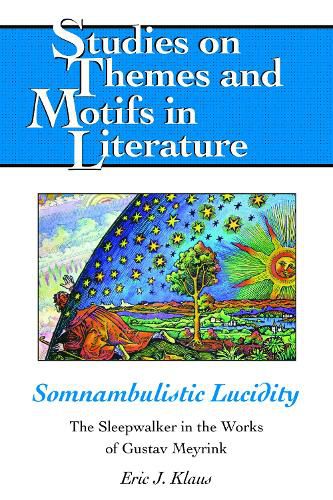Readings Newsletter
Become a Readings Member to make your shopping experience even easier.
Sign in or sign up for free!
You’re not far away from qualifying for FREE standard shipping within Australia
You’ve qualified for FREE standard shipping within Australia
The cart is loading…






This title is printed to order. This book may have been self-published. If so, we cannot guarantee the quality of the content. In the main most books will have gone through the editing process however some may not. We therefore suggest that you be aware of this before ordering this book. If in doubt check either the author or publisher’s details as we are unable to accept any returns unless they are faulty. Please contact us if you have any questions.
Gustav Meyrink (1868-1932), best known as the author of The Golem (1915), experimented with the occult in a time rife with occult experimentation. As a seeker of esoteric truth, he practiced and wrote about elements of Western Esotericism-alternative religious movements that pursued methods of tapping into secret spiritual wisdom that helped define the age. In doing so, Meyrink developed his own theories of salvation, which featured yoga as a means to open the door to supernatural and paranormal experience. In this way, his life, as well as his fiction, exemplifies liminality, existence on the margins. The core symbol of this liminal experience is the somnambulist: a figure existing between material and spiritual states of consciousness, having access to both yet belonging to neither. His oeuvre features characters entering trances, wandering the borders between waking and metaphysical worlds, gaining access to secret truths, and realizing salvation via a unio mystica. Meyrink, therefore, has much to say about the cultural climate of the fin de siecle: by viewing the turn of the twentieth century as a time defined by searches for certitude, by locating Western Esotericism as a meaningful movement of the age, by situating Meyrink on the periphery of social and spiritual spheres, and by identifying the sleepwalker as a seminal figure of the period as well as in Meyrink’s work, this study echoes Meyrink’s own attempts to find lucidity in the ambiguity of somnambulism.
$9.00 standard shipping within Australia
FREE standard shipping within Australia for orders over $100.00
Express & International shipping calculated at checkout
Stock availability can be subject to change without notice. We recommend calling the shop or contacting our online team to check availability of low stock items. Please see our Shopping Online page for more details.
This title is printed to order. This book may have been self-published. If so, we cannot guarantee the quality of the content. In the main most books will have gone through the editing process however some may not. We therefore suggest that you be aware of this before ordering this book. If in doubt check either the author or publisher’s details as we are unable to accept any returns unless they are faulty. Please contact us if you have any questions.
Gustav Meyrink (1868-1932), best known as the author of The Golem (1915), experimented with the occult in a time rife with occult experimentation. As a seeker of esoteric truth, he practiced and wrote about elements of Western Esotericism-alternative religious movements that pursued methods of tapping into secret spiritual wisdom that helped define the age. In doing so, Meyrink developed his own theories of salvation, which featured yoga as a means to open the door to supernatural and paranormal experience. In this way, his life, as well as his fiction, exemplifies liminality, existence on the margins. The core symbol of this liminal experience is the somnambulist: a figure existing between material and spiritual states of consciousness, having access to both yet belonging to neither. His oeuvre features characters entering trances, wandering the borders between waking and metaphysical worlds, gaining access to secret truths, and realizing salvation via a unio mystica. Meyrink, therefore, has much to say about the cultural climate of the fin de siecle: by viewing the turn of the twentieth century as a time defined by searches for certitude, by locating Western Esotericism as a meaningful movement of the age, by situating Meyrink on the periphery of social and spiritual spheres, and by identifying the sleepwalker as a seminal figure of the period as well as in Meyrink’s work, this study echoes Meyrink’s own attempts to find lucidity in the ambiguity of somnambulism.